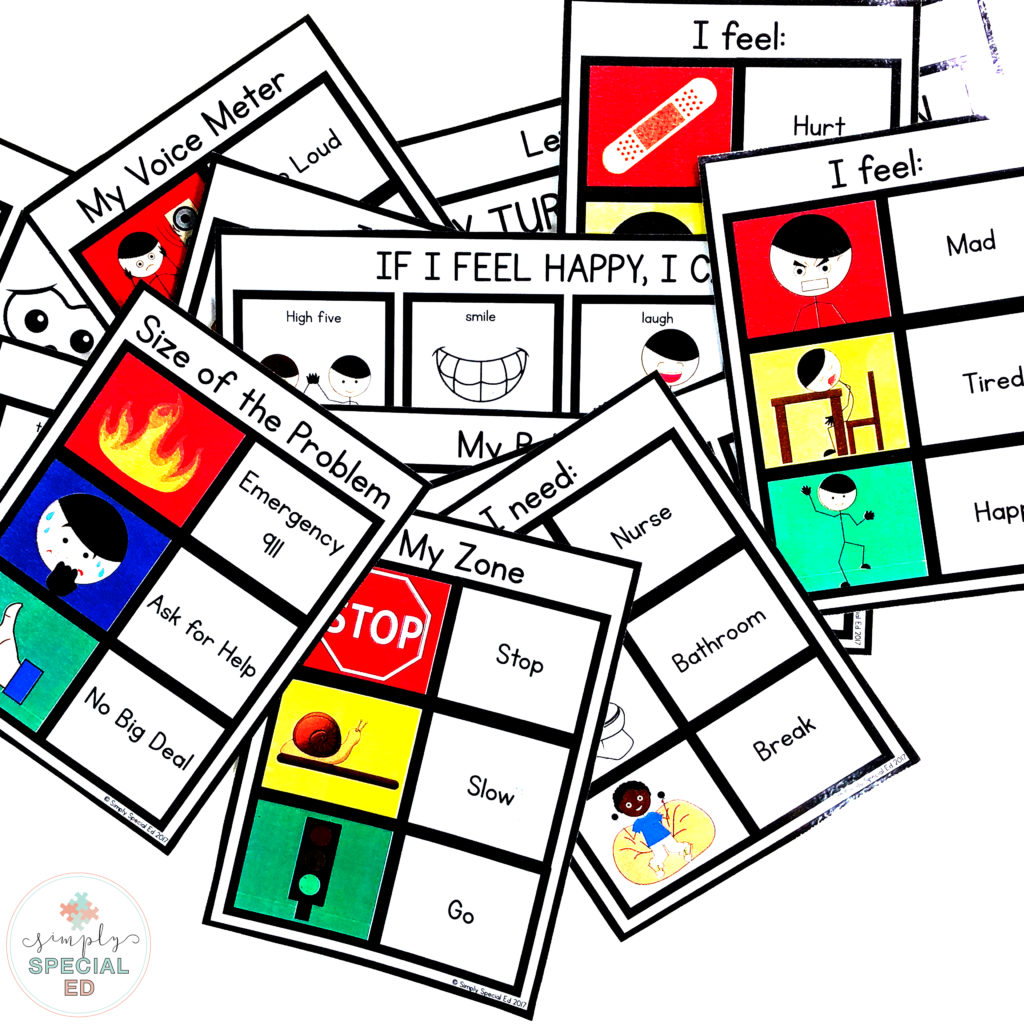
Meltdowns/Tantrums Operationally Defined
“Any instance where, with or without crying, student engages in non-compliance paired with 1 or more of the following behaviors: throwing self to floor, inappropriate use of materials (e.g., property destruction) and/or yelling/screaming.”
Antecedent Strategies
1. Take Informed Data and Use It
Please remember that behavior is communication. If your students are engaging in frequent episodes of tantrum behavior, take ABC data to see if there are clear antecedents to why a student may be upset or struggling to regulate themselves. Be sure to look at the time of day, noise level and staff present . It is also important to take note of precursor behaviors that may indicate that something is wrong. Examples of precursor behaviors include changes in facial expressions or vocalizations that would not fit into our behavioral definition.
Once you can identify the precursor behaviors, you can modify the environment and/or the expectation to prevent a tantrum from occurring. This allows our students to remain calm, work through a difficult moment with support and feel successful in the classroom.

2. NCR of Sensory Regulation Tools
Sensory regulation tools should be individualized to the student. Provide your students with a sampling menu of sensory tools they can try so that they can figure out which activities support them best. You may have to explicitly teach the students how to use each tool. Then, continue to offer the strategies at times of calm. They will learn how to use the tool/strategy when they are regulated and begin to associate it with feeling calm.
Any activity can become an activity for sensory regulation. Identify the types of sensory needs your student has and use a variety of tools in that category. See examples below.

3. Make a Teacher Bag
When moving around the school building, bring all of the tools you need to help your students be successful. You may not be able to avoid all antecendents, but you will be able to be prepared if something happens. I keep my teacher bag on a hook by the door. This way, whenever we leave the classroom, myself or one of my paras is able to grab the bag. Inside, we keep bubbles, chalk, social stories for kids who need them, tools for behavior momentum, our walkie-talkie and more. We wear visuals around necks on a keyring, but you can also keep visual supports in this bag as well. We like to keep a whiteboard and marker so we can nonverbally communicate with our kiddos who are readers. Find more information about what can go into a teacher bag here!


In Situation/Reactive Strategies
4. Response Blocking
*Note: environmental response blocking is an antecedent strategy and a reactive strategy. You can keep most materials away, but you may need to move materials in-situ.*
When a student engages in a tantrum, they may also engage in property destruction (ripping papers, throwing things, dumping bins, etc.) If possible, try to block access to materials that are not being used appropriately. This may mean removing them from the area or covering materials when not in use. If the student is moving around the classroom while engaging in tantrum behavior, try to limit what is accessible. Because I have many students who engage in property destruction, each student has a bin of their own materials and all extra materials are kept in closed cabinets. This increases the response effort to engage in property destruction.


If a student engages in physical aggression along with the tantrum behavior, you can also use response blocking to limit their contact with your body. Physical response blocking includes body positioning, strike blocking and restraint reduction. If you need more information on how to do response blocking with your body, look into CPI or PMT training. Your school should be able to provide this training for you if you are managing these types of behaviors.
On the most basic level, keep these three things in mind when physically response blocking:
- 1. Position your body so that you are facing the student at a diagonal.
- 2. Block strikes with a straight arm and open palm.
- 3. Be aware of giving nonverbal attention if doing planned ignoring.

5. Tell Them What They Should Do… Not What They Shouldn’t
Be clear in your directive. When a student is in crisis, this is the time to use specific and concise in your directions. Using neutral phrasing and a calm tone, tell your student what you want them to do. For many students, being redirected is enough to trigger a tantrum. Using positive language and a neutral tone allows you to redirect without a student feeling like they are getting in trouble.
You can find Behavior Visuals from Simple Special Ed here.

Have a specific question about how to handle a specific behavior? Leave a comment here or join the Simply Special Community Facebook Group.




